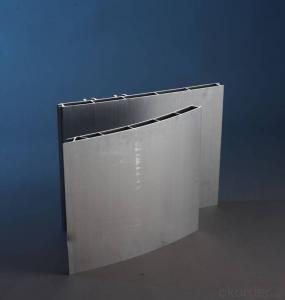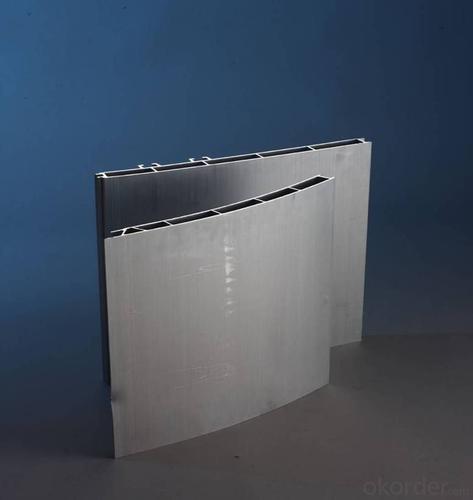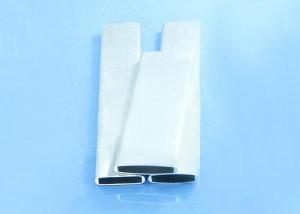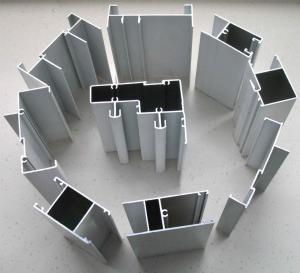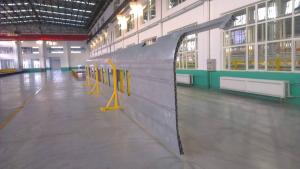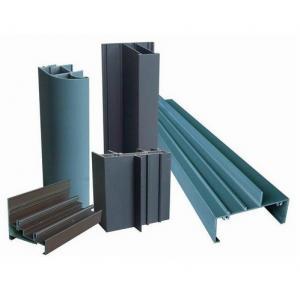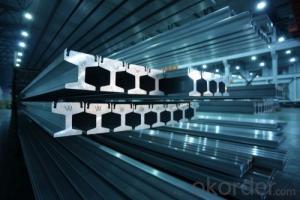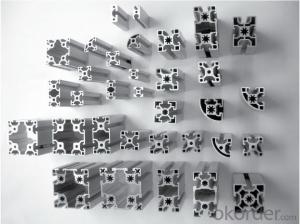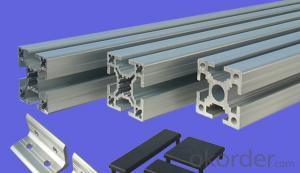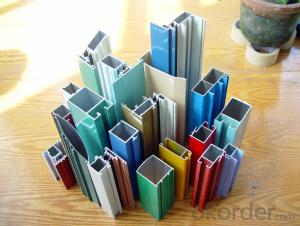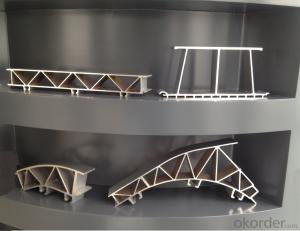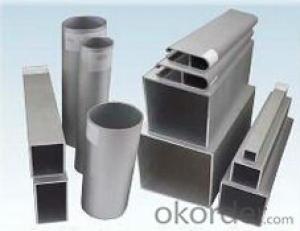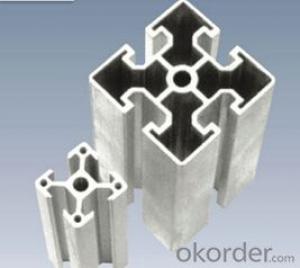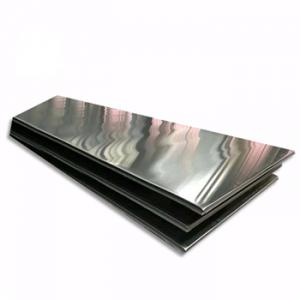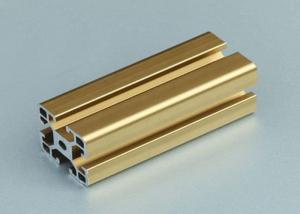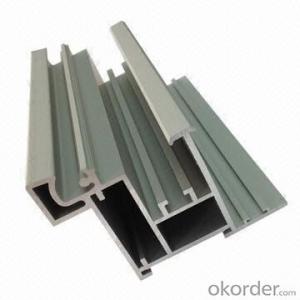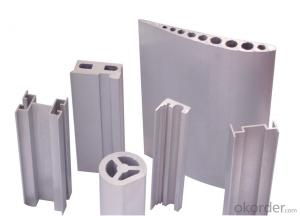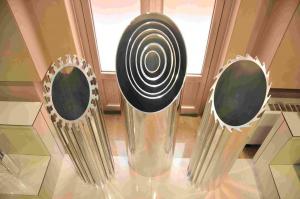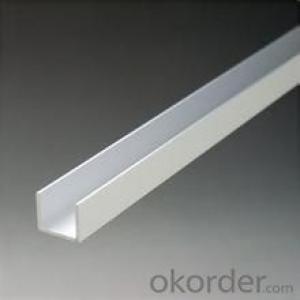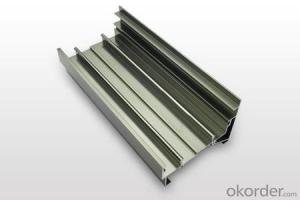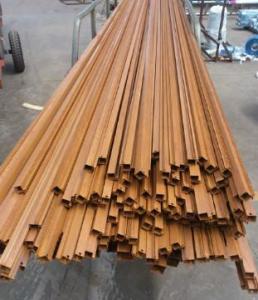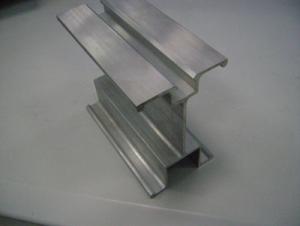6005A Aluminium Profiles for roof of subway carriage
- Loading Port:
- Shanghai
- Payment Terms:
- TT OR LC
- Min Order Qty:
- 5 m.t.
- Supply Capability:
- 1000 m.t./month
OKorder Service Pledge
OKorder Financial Service
You Might Also Like
Specification
1. Structure of 6005A Aluminium Profiles for roof of subway carriage Description
6005A Aluminium Profiles for roof of subway carriage is one semi-finished aluminium material. This coil can be rolled down to aluminium coil,sheet,circle ect. The alloy AA1050 is widly used in building, industry ect. Its weight is much lower than steel. So many customers choosed aluminium material instead of steel.
2. Specification of 6005A Aluminium Profiles for roof of subway carriage
6005A Aluminium Profiles for roof of subway carriage | |
Main Specification | |
Alloy | AA1xxx (AA1050, AA1060, AA1070, AA1100 etc.) |
AA3xxx (AA3003, AA3004, AA3005, AA3105 etc.) | |
AA5xxx, AA6XXX (AA5052,AA5083, AA5754, AA6061, AA6062 etc.) | |
AA8xxx(AA8011, AA8006 etc.) | |
Temper | H14,H16, H18, H22, H24, H26, H32,O/F, T4, T6, T651 |
Thickmess | 0.01mm-100mm |
Width | 30mm-1700mm |
Standard | GB/T 3880-2006/ASTM |
Special specification is available on customer's requirement | |
3. Application of 6005A Aluminium Profiles for roof of subway carriage
(1).Interior: wall cladding, ceilings, bathrooms, kitchens and balconies, shutters, doors...
(2).Exterior: wall cladding, facades, roofing, canopies, tunnels,column covers , renovations...
(3).Advertisement: display platforms, signboards, fascia, shop fronts...
4. Feature of 6005A Aluminium Profiles for roof of subway carriage
Surfact Quality :
Be free from Oil Stain, Dent, Inclusion, Scratches, Stain, Oxide Dicoloration, Breaks, Corrosion, Roll Marks, Dirt Streaks and other defect which will interfere with use,
Mechenical Property:
Chemical Composite and Mechanical Property
5. Certificate of 6005A Aluminium Profiles for roof of subway carriage
SGS and ROHS(if client request, paid by client), MTC(plant provided), Certificate of Origin(FORM A, FORM E, CO), Bureau Veritas and SGS (if client request, paid by client), CIQS certificate
6. Image of 6005A Aluminium Profiles for roof of subway carriage
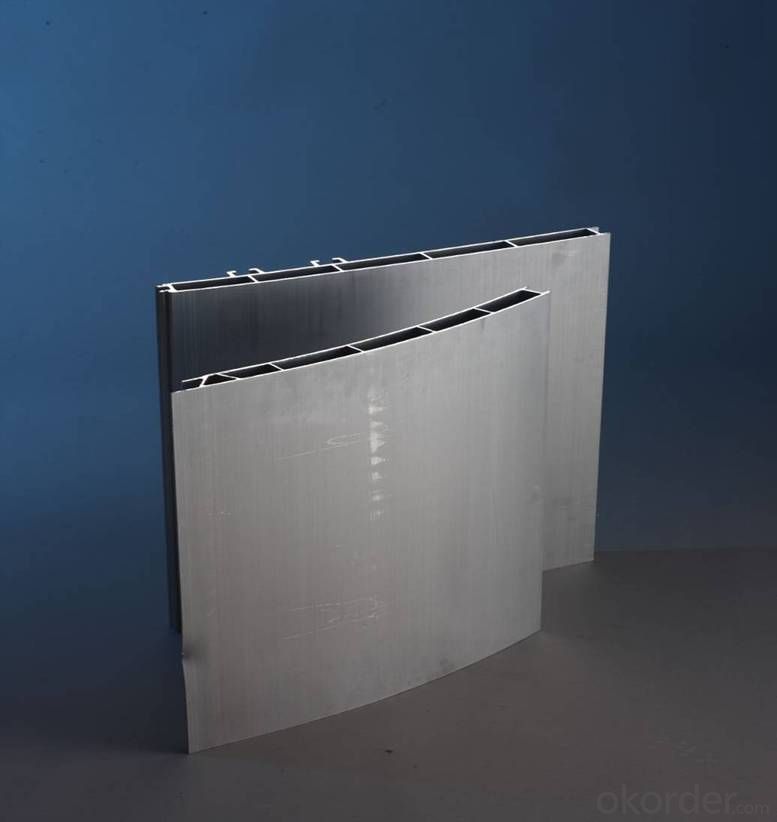
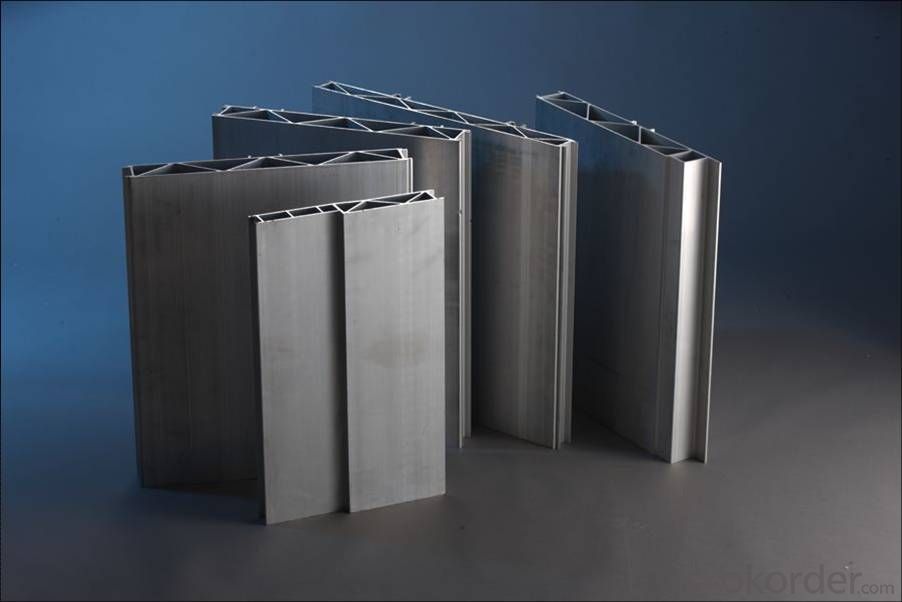
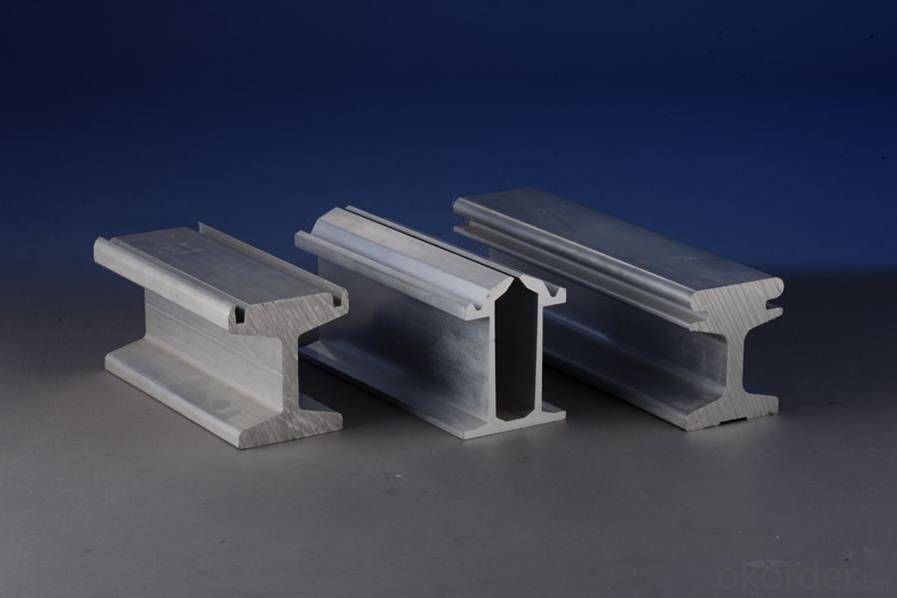
7. Package and shipping of 6005A Aluminium Profiles for roof of subway carriage
First, plastic cloth with drying agent inside; Second, Pearl Wool ; Third, wooden cases with dry agent , fumigation wooden pallets, aluminum surface could cover blue PVC film
8. FAQ
1) What is the delivery time?
Depends on actual order, around 20 to 35 days
2) What is the QC system:
We have QC staff of 20 persons and advanced equipment, each production is with MTC traced from Aluminum ingot lot.
3) What market do you mainly sell to?
Australia, America, Asia, Middle East, Western Europe, Africa etc
- Q: What are the different bending options available for aluminum profiles?
- There are several bending options available for aluminum profiles, including cold bending, hot bending, and rotary draw bending. Cold bending is a common method that involves using a bending machine to gradually bend the aluminum profile without applying heat. Hot bending, on the other hand, requires heating the aluminum profile to a specific temperature before bending it. This method is usually used for thicker profiles or when tighter bending radii are required. Rotary draw bending is a precision bending technique that utilizes a mandrel and a rotating die to achieve accurate and consistent bends in aluminum profiles.
- Q: How do aluminum profiles contribute to LEED certification?
- Aluminum profiles can contribute to LEED (Leadership in Energy and Environmental Design) certification in several ways. Firstly, aluminum is a highly sustainable material. It is one of the most abundant elements on Earth and can be easily recycled without losing its quality. Using aluminum profiles in construction projects reduces the demand for new raw materials, conserves energy, and minimizes greenhouse gas emissions. This aligns with LEED's focus on reducing the environmental impact of buildings. Additionally, aluminum profiles are lightweight yet durable, allowing for efficient transportation and installation. This can contribute to LEED points in the category of Sustainable Sites, which encourages the use of materials and techniques that minimize impacts on ecosystems and reduce pollution during construction. Furthermore, aluminum profiles can be used to improve energy efficiency in buildings. By incorporating thermal breaks and insulation, aluminum profiles can help prevent heat transfer and reduce energy consumption for heating or cooling. This can contribute to LEED points in the Energy and Atmosphere category, which promotes the use of energy-efficient systems and materials. Moreover, aluminum profiles are resistant to corrosion and require minimal maintenance over their lifespan. This durability can contribute to LEED points in the Materials and Resources category, which encourages the use of long-lasting, low-maintenance materials that minimize waste and the need for replacement. In conclusion, aluminum profiles contribute to LEED certification by promoting sustainability, reducing environmental impacts, improving energy efficiency, and enhancing the durability of buildings. By considering the use of aluminum profiles in construction projects, designers and builders can achieve LEED credits and contribute to a more sustainable future.
- Q: How do you prevent galvanic corrosion with aluminum profiles?
- To prevent galvanic corrosion with aluminum profiles, there are several steps that can be taken: 1. Use compatible materials: It is important to select materials that are compatible with aluminum to avoid galvanic corrosion. Avoid coupling aluminum profiles with dissimilar metals, such as copper, brass, or steel, as these combinations can accelerate the corrosion process. 2. Apply protective coatings: Applying a protective coating, such as anodizing or painting, can provide a barrier between the aluminum profiles and the surrounding environment. Anodizing creates a durable oxide layer on the surface of aluminum, which enhances its corrosion resistance. Painting with suitable corrosion-resistant paints can also provide an effective barrier against galvanic corrosion. 3. Insulate dissimilar metals: If it is necessary to use dissimilar metals in conjunction with aluminum profiles, it is crucial to insulate them from direct contact. This can be achieved by using gaskets, insulating materials, or non-conductive fasteners to separate the metals and prevent the electrical contact that causes galvanic corrosion. 4. Regular maintenance and cleaning: Regular cleaning and maintenance of aluminum profiles can help prevent galvanic corrosion. Removing any accumulated dirt, debris, or other contaminants from the surface can minimize the chances of corrosion initiation. 5. Control the environment: Controlling the environment in which aluminum profiles are used can also play a significant role in preventing galvanic corrosion. Avoid exposing aluminum to environments with high humidity, saltwater, or acidic conditions, as these can accelerate corrosion. Additionally, maintaining proper ventilation and moisture control can help minimize the risk of corrosion. By following these preventive measures, it is possible to significantly reduce the risk of galvanic corrosion and ensure the longevity and performance of aluminum profiles.
- Q: Is it possible to utilize aluminum profiles as a material for exterior wall cladding?
- <p>Yes, aluminum profiles are commonly used for exterior cladding due to their durability, low maintenance, and resistance to corrosion. They are lightweight, easy to install, and can be designed in various shapes and sizes to suit architectural requirements. Additionally, aluminum profiles offer excellent weather resistance and can be painted or anodized to provide a protective finish and aesthetic appeal.</p>
- Q: Are aluminum profiles capable of being tailored to fulfill unique design needs or standards?
- <p>Yes, aluminum profiles can be customized to meet specific design requirements or specifications. This customization can include varying the dimensions, finishes, and shapes to fit the intended application. Manufacturers can modify the extrusion process to create profiles with specific tolerances, surface treatments, and mechanical properties. This flexibility makes aluminum profiles suitable for a wide range of industries, including construction, automotive, and aerospace.</p>
- Q: What are the different installation methods for aluminum profiles?
- There are several different installation methods for aluminum profiles, depending on the specific application and requirements. 1. Screwed Installation: This is one of the most common methods for installing aluminum profiles. It involves using screws to attach the profiles to the desired surface. The profiles typically have pre-drilled holes to facilitate this process. Screwed installation provides a secure and stable connection, making it suitable for various applications. 2. Welded Installation: In some cases, aluminum profiles are welded together to create a strong and seamless joint. This method is commonly used in structural applications where high strength and rigidity are required. Welded installation can provide a more permanent and durable connection, but it requires specialized equipment and expertise. 3. Bolted Installation: Bolted installation involves using bolts and nuts to connect aluminum profiles. This method offers flexibility as it allows for easy disassembly and reassembly if needed. Bolted installation is commonly used in applications where frequent adjustments or modifications are required. 4. Adhesive Installation: Adhesive installation involves using specialized adhesives or bonding agents to attach aluminum profiles to the desired surface. This method is particularly useful when a seamless and aesthetically pleasing finish is desired, as it eliminates the need for visible screws or fasteners. Adhesive installation is commonly used in applications such as interior design, signage, and display systems. 5. Clamped Installation: Clamping is another method for installing aluminum profiles, especially in applications where a non-permanent connection is required. Clamps or brackets are used to secure the profiles in place, allowing for easy adjustment or removal. Clamped installation is commonly used in applications such as exhibition booths, temporary structures, or modular systems. It is important to consider the specific requirements of the project and consult with professionals or manufacturers to determine the most suitable installation method for aluminum profiles. Factors such as load-bearing capacity, aesthetics, ease of installation, and maintenance should be taken into account to ensure a successful installation.
- Q: This question asks about the various types of aluminum profiles that are specifically used for the purpose of insulating exterior walls.
- <p>Aluminum profiles for exterior wall insulation are crucial for thermal efficiency and structural integrity. Common types include: 1. <strong>Aluminum Cladding Profiles</strong>: These cover the insulation and provide a weather-resistant barrier. 2. <strong>Aluminum Insulation Fin Profiles</strong>: Used to create a gap for insulation material between the wall and the cladding. 3. <strong>Aluminum Casing Profiles</strong>: These encase the insulation, providing a finished look and additional protection. 4. <strong>Aluminum Angle Profiles</strong>: Used for corners and edges to maintain structural integrity. 5. <strong>Aluminum Trim Profiles</strong>: For finishing touches and to cover gaps or seams. Each type serves a specific function in the insulation system, ensuring energy efficiency and a durable exterior wall construction.</p>
- Q: Are aluminum profiles energy-efficient?
- Certainly, aluminum profiles are regarded as energy-efficient. Being a highly conductive material, aluminum has the ability to efficiently transfer heat or cold. This characteristic enables aluminum profiles to offer outstanding thermal insulation, effectively reducing energy loss and ensuring a steady indoor temperature. Furthermore, aluminum profiles can be constructed with thermal breaks, which enhance their energy efficiency by diminishing heat transfer between the interior and exterior of a building. These attributes make aluminum profiles a favored option for windows, doors, and other building elements, as they actively contribute to energy conservation and mitigate a structure's overall carbon footprint.
- Q: How do aluminum profiles perform in terms of UV resistance?
- Good UV resistance is typically offered by aluminum profiles. Protection against UV radiation is provided to some extent by the natural oxide layer that forms on the surface of aluminum. However, the UV resistance performance of aluminum profiles can vary depending on factors like the specific alloy used, the quality of surface treatment, and the environmental conditions to which they are exposed. Alloys with higher copper content, such as 6000 series aluminum, generally have better UV resistance compared to pure aluminum or alloys with lower copper content. This is because copper enhances the ability of the natural oxide layer to withstand UV radiation. Proper anodizing or powder coating processes tend to improve the UV resistance of aluminum profiles in terms of surface treatment. Anodizing involves the creation of a thicker and more durable oxide layer on the surface of the aluminum, enhancing its ability to resist UV damage. On the other hand, powder coating involves the application of a protective polymer layer to the aluminum surface, acting as a barrier against UV radiation. The UV resistance of aluminum profiles can also be influenced by environmental conditions. Intense sunlight, high temperatures, and exposure to pollutants or corrosive substances can accelerate the degradation of the oxide layer, thereby reducing overall UV resistance. Regular cleaning and maintenance can help extend the lifespan and UV resistance of aluminum profiles. To summarize, aluminum profiles generally offer good UV resistance due to the presence of a natural oxide layer on the surface. The performance in terms of UV resistance can be influenced by factors such as alloy composition, surface treatment, and environmental conditions. It is advisable to consult manufacturers or suppliers to ensure that the specific aluminum profiles meet the required UV resistance for the intended application.
- Q: Are there any limitations or drawbacks of using aluminum profiles?
- There exist certain limitations and drawbacks when utilizing aluminum profiles. One constraint is its inferior strength in comparison to materials like steel. When it comes to demanding applications that necessitate high tensile strength or load-bearing capacity, aluminum profiles may not be the most suitable choice. In such circumstances, steel or alternative materials may be more preferable. Another disadvantage is that aluminum is more susceptible to corrosion when contrasted with materials such as stainless steel. Despite the possibility of applying protective coatings to aluminum profiles, they may still be prone to corrosion in harsh environments or if not adequately maintained. This can have an adverse impact on their durability and longevity. Furthermore, aluminum profiles may entail higher initial costs when compared to other materials. The production and processing of aluminum can be more expensive, which can affect the overall cost of incorporating aluminum profiles into construction or manufacturing projects. Lastly, aluminum profiles may have limitations concerning design flexibility. Although aluminum is relatively easy to shape and mold into different profiles, it may not possess the same versatility as certain other materials. This can restrict the range of options available for complex or intricate designs. Despite these limitations and drawbacks, aluminum profiles still offer numerous advantages, including lightweight construction, excellent thermal conductivity, and resistance to electrical conductivity. Therefore, it is crucial to thoroughly contemplate the specific requirements and constraints of a project before deciding to utilize aluminum profiles.
Send your message to us
6005A Aluminium Profiles for roof of subway carriage
- Loading Port:
- Shanghai
- Payment Terms:
- TT OR LC
- Min Order Qty:
- 5 m.t.
- Supply Capability:
- 1000 m.t./month
OKorder Service Pledge
OKorder Financial Service
Similar products
Hot products
Hot Searches
Related keywords
